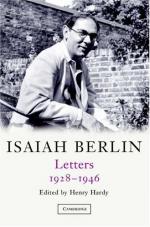|
This section contains 655 words (approx. 3 pages at 300 words per page) |

|
Berlin, long a symbol of Germany, was also the symbolic center of the Cold War until the collapse of communism in 1989. Its citizenry weathered some chilling and dramatic clashes during the Cold War, which were representative of the larger global struggle.
Ideology took a backseat during World War II but came to the fore at the Potsdam Conference in July and August 1945, when President Harry S. Truman confronted Joseph Stalin over the issue of diverse representative governments in Soviet-occupied Eastern Europe. Soon the Soviet Union and the United States sought to gain influence at various points around the world. One of the most enduring and telling images of the Cold War is that of American airmen supplying West Berlin with food and other essentials via the Berlin airlift in response to the 1948 and 1949 blockade of Berlin, a city divided after World War II between...
|
This section contains 655 words (approx. 3 pages at 300 words per page) |

|


